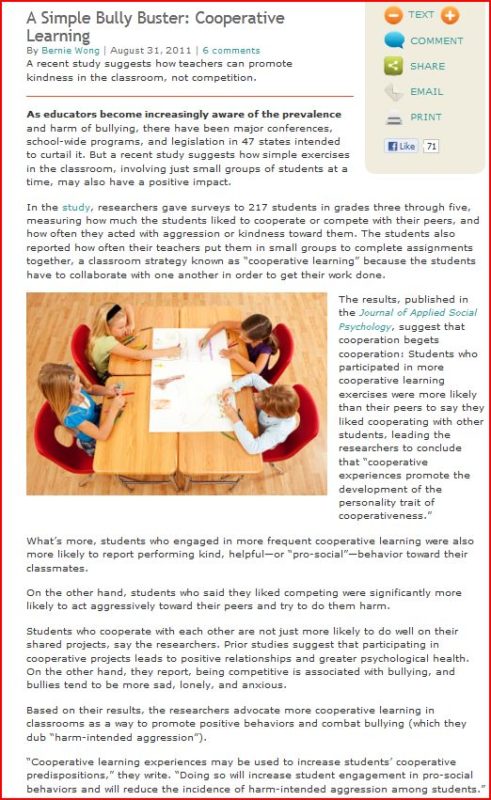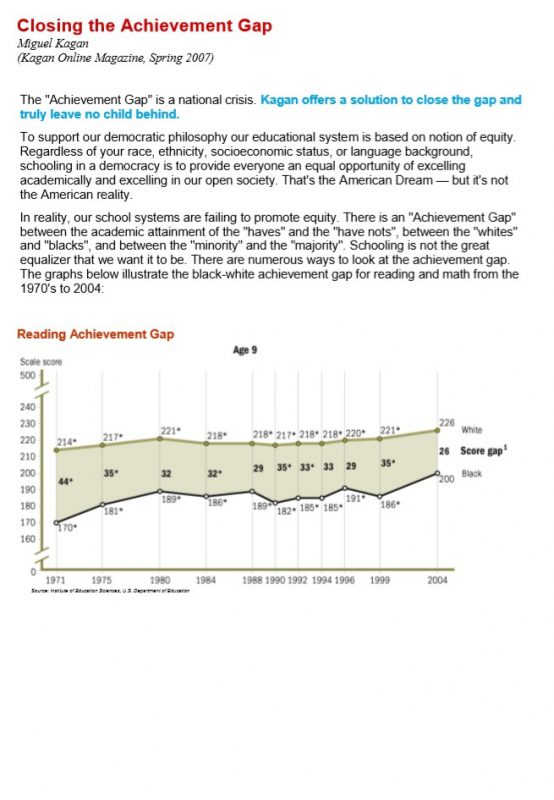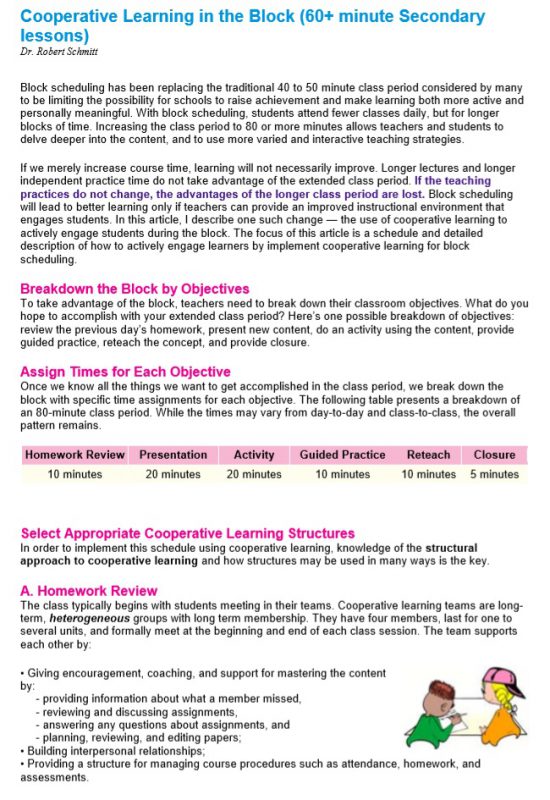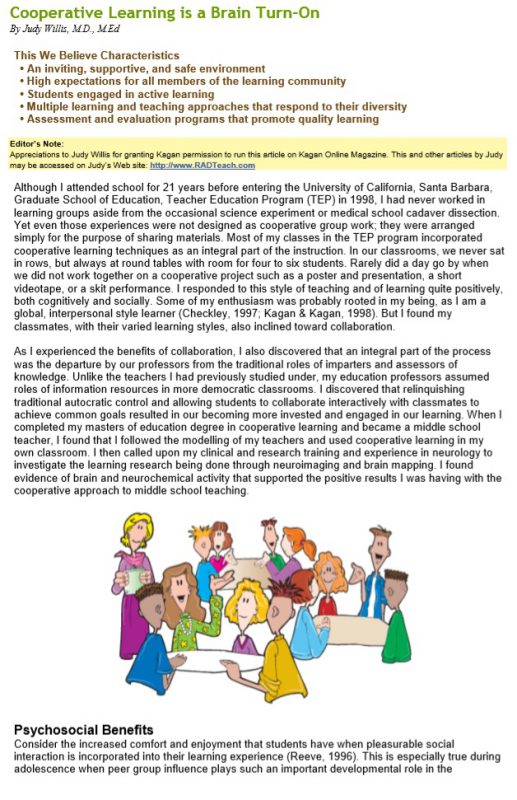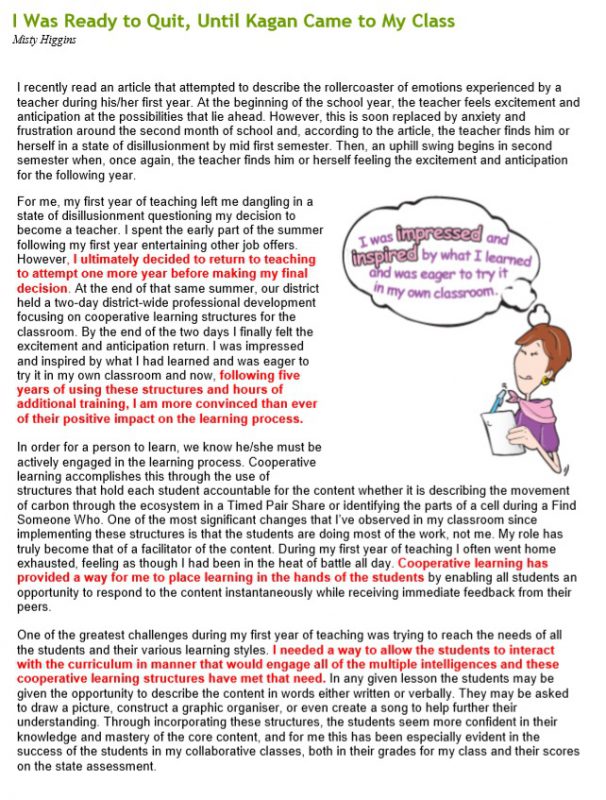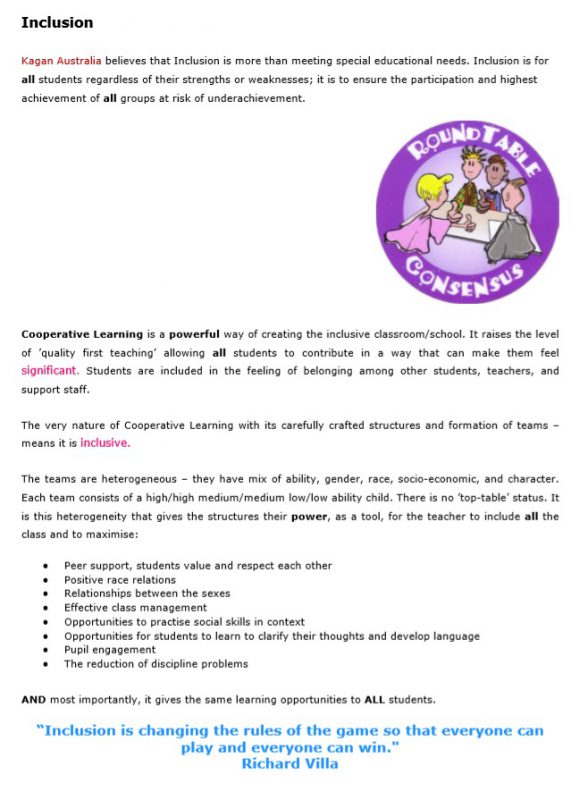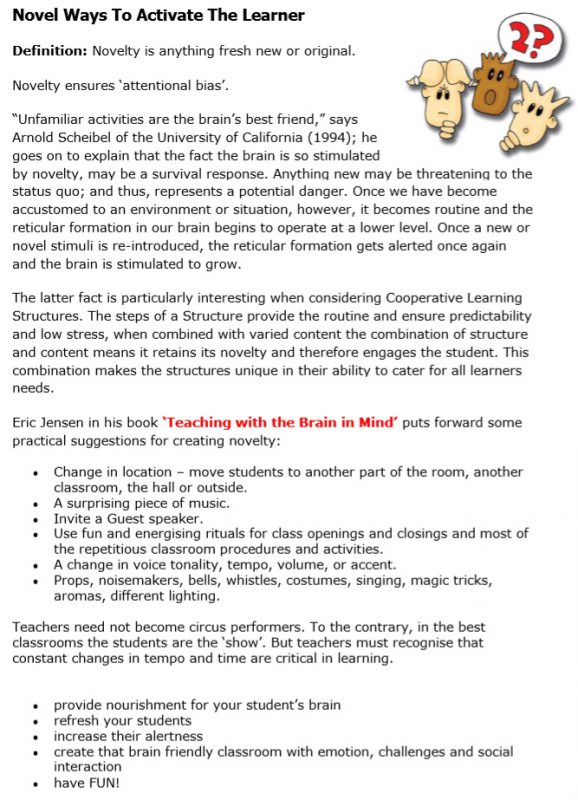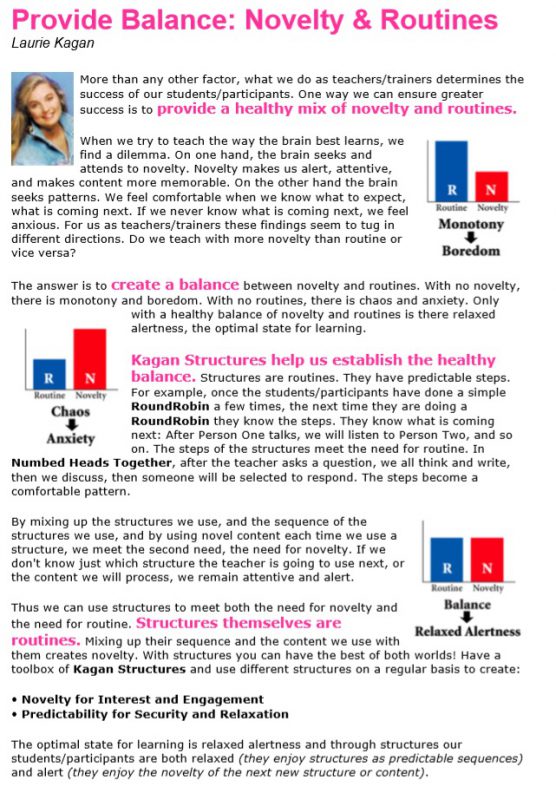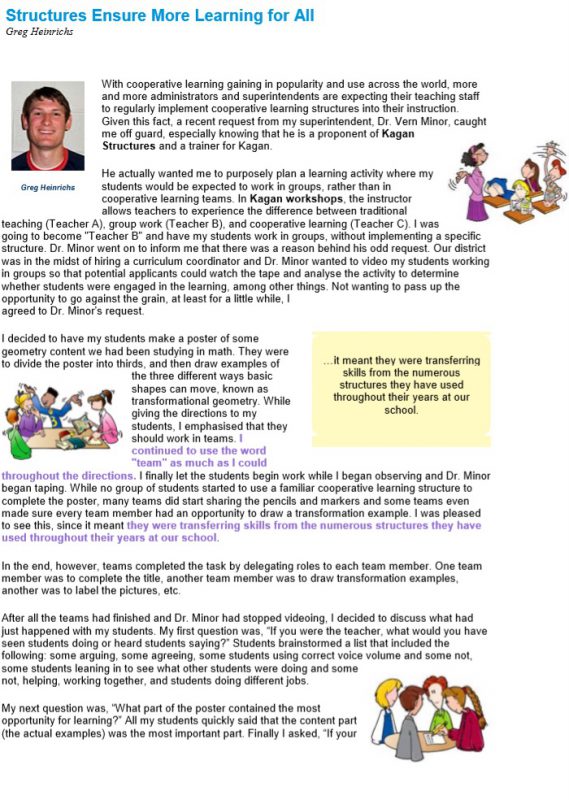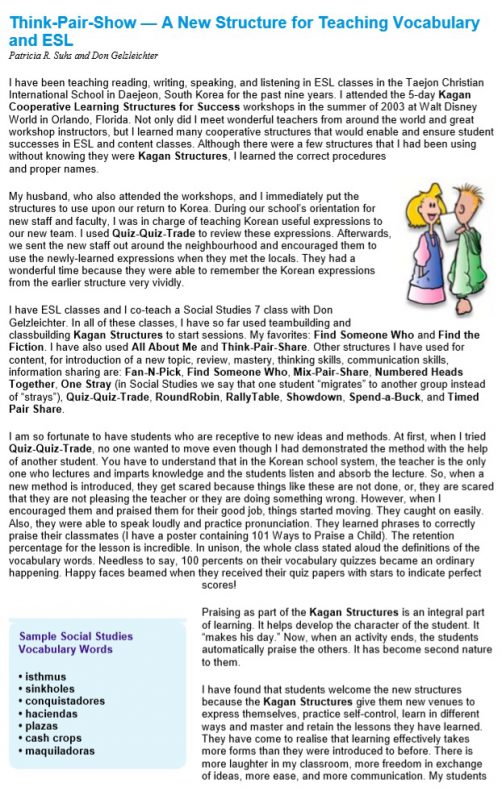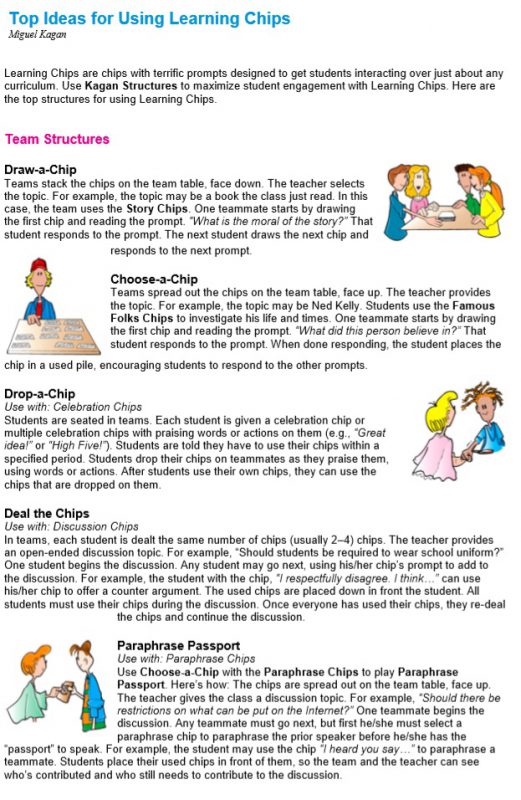What Makes Cooperative Learning Work for Teachers & Students
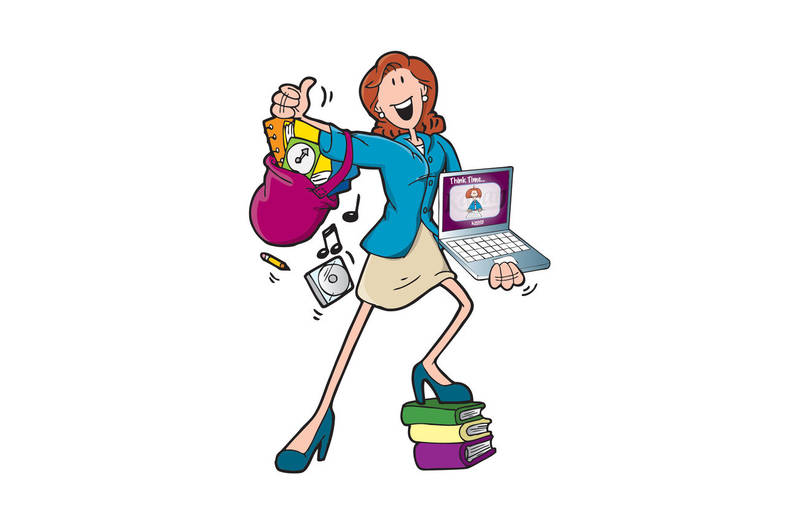
Other Articles about Kagan Cooperative Learning
These are professional articles about Kagan Cooperative Learning. Teachers and university students will benefit from reading articles by educators, lecturers and trainers about the implementation of Kagan Cooperative Learning.
Kagan Structures are scientifically research based as well as backed by classroom evidence from districts, schools and teachers experiencing success with Kagan.
Kagan Structures integrate the most powerful principles from decades of research. Among the many positive findings of this field or research are improved academic achievement, improved ethnic and race relations, improved social skills and social relations and increased liking for self, others and school.
The Kagan Structures have proven themselves effective teaching and learning tools for cooperative learning, multiple intelligences, character education, language learning and emotional intelligence. Below you will find links to research reviews, field data, success stories and articles supporting the use of Kagan Structures.
A recent study suggests how teachers can promote kindness in the classroom, not competition.
As educators become increasingly aware of the prevalence and harm of bullying, there have been major conferences, school-wide programs and legislation in 47 US states intended to curtail it. But a recent study suggests how simple exercises in the classroom, involving just small groups of students at a time, may also have a positive impact.
Read ArticleIn reality, our school systems are failing to promote equity. There is an “Achievement Gap” between the academic attainment of the “haves” and the “have nots”, between the “whites” and “blacks”, and between the “minority” and the “majority”. Schooling is not the great equalizer that we want it to be. There are numerous ways to look at the achievement gap.
Read ArticleBlock scheduling will lead to better learning only if teachers can provide an improved instructional environment that engages students. In this article, the author describe one such change — the use of cooperative learning to actively engage students during the block. The focus of this article is a schedule and detailed description of how to actively engage learners by implement cooperative learning for block scheduling.
Read ArticleClassrooms where students are engaged in well-planned cooperative work are more joyful places in which management issues diminish and students develop social and learning skills. Now we know that the process of collaborative work is associated with increased neural activity in relational and emotional memory connections and long-term memory storage. It is reassuring in times of rigid curriculum requirements to have not only the academic and social evidence of the benefit of cooperative activities, but to also have the objective neuro-scientific data to support what teachers, and for that matter, the ants and the bees, have known all along.
Read ArticleA beginning teacher writes about their difficulties:I recently read an article that attempted to describe the roller coaster of emotions experienced by a teacher during his/her first year. At the beginning of the school year, the teacher feels excitement and anticipation at the possibilities that lie ahead. However, this is soon replaced by anxiety and frustration around the second month of school and, according to the article, the teacher finds him or herself in a state of disillusionment by mid first semester. Then, an uphill swing begins in second semester when, once again, the teacher finds him or herself feeling the excitement and anticipation for the following year.
Read ArticleKagan Australia believes that Inclusion is more than meeting special educational needs. Inclusion is for all students regardless of their strengths or weaknesses; it is to ensure the participation and highest achievement of all groups at risk of underachievement.
Read ArticleWhat do fun and energising activities have to do with learning? A lot! Brain research informs us that we must eliminate threat and provide a secure learning environment.Brain science also teaches us that students’ brains need oxygen and glucose. Feed your students’ brains with the energisers.
Read ArticleAn article by Laurie Kagan. More than any other factor, what we do as teachers determines the success of our students. One way we can ensure greater success is to provide a healthy mix of novelty and routines.Too much routine produces boredom and too much novelty produces anxiety.
Read ArticleA Year 3 & 4 teacher has his class experience the difference between group work and Kagan Cooperative Learning.The students feedback is very perceptive.
Read ArticleAn article by an ESL teacher who uses Kagan structures.She uses teambuilding and classbuilding Kagan Structures to start sessions. Other structures the teacher has used for content, for introduction of a new topic, review, mastery, thinking skills, communication skills andinformation sharing.
Read ArticleLearning Chips are chips with terrific prompts designed to get students interacting over just about any curriculum. Use Kagan Structures to maximize student engagement with Learning Chips. Here are the top structures for using Learning Chips.
Read Article
